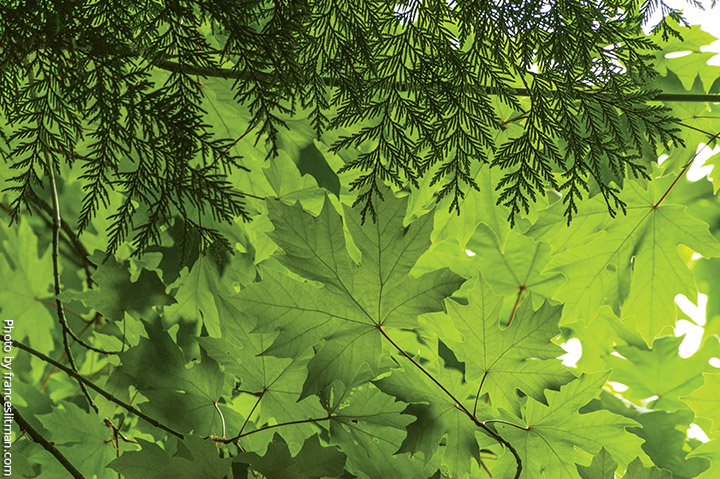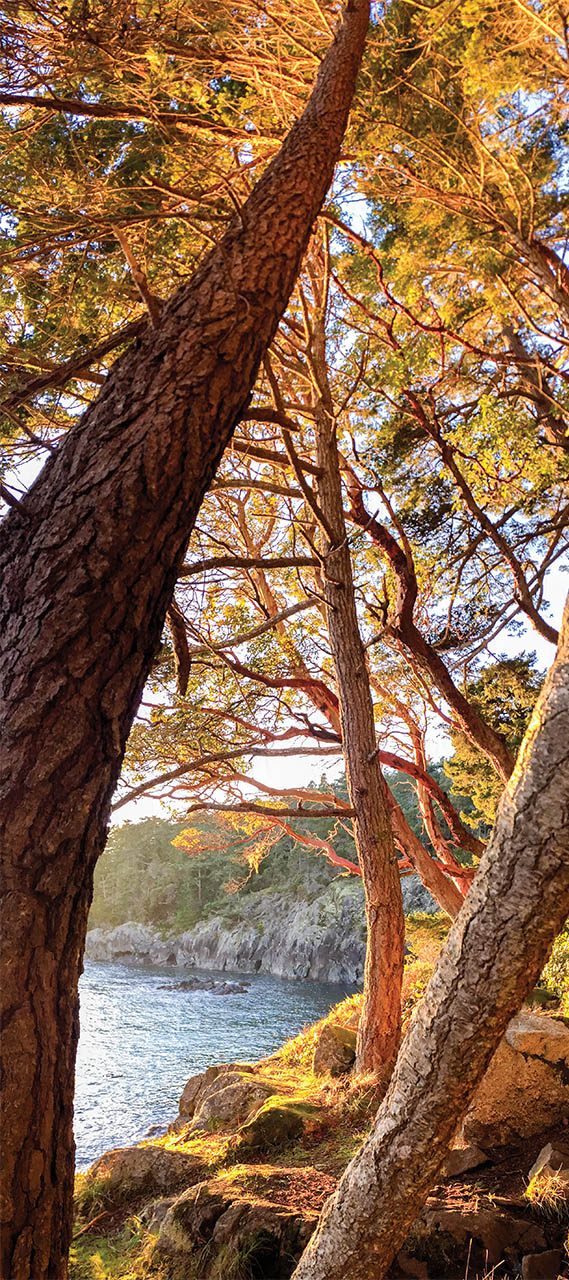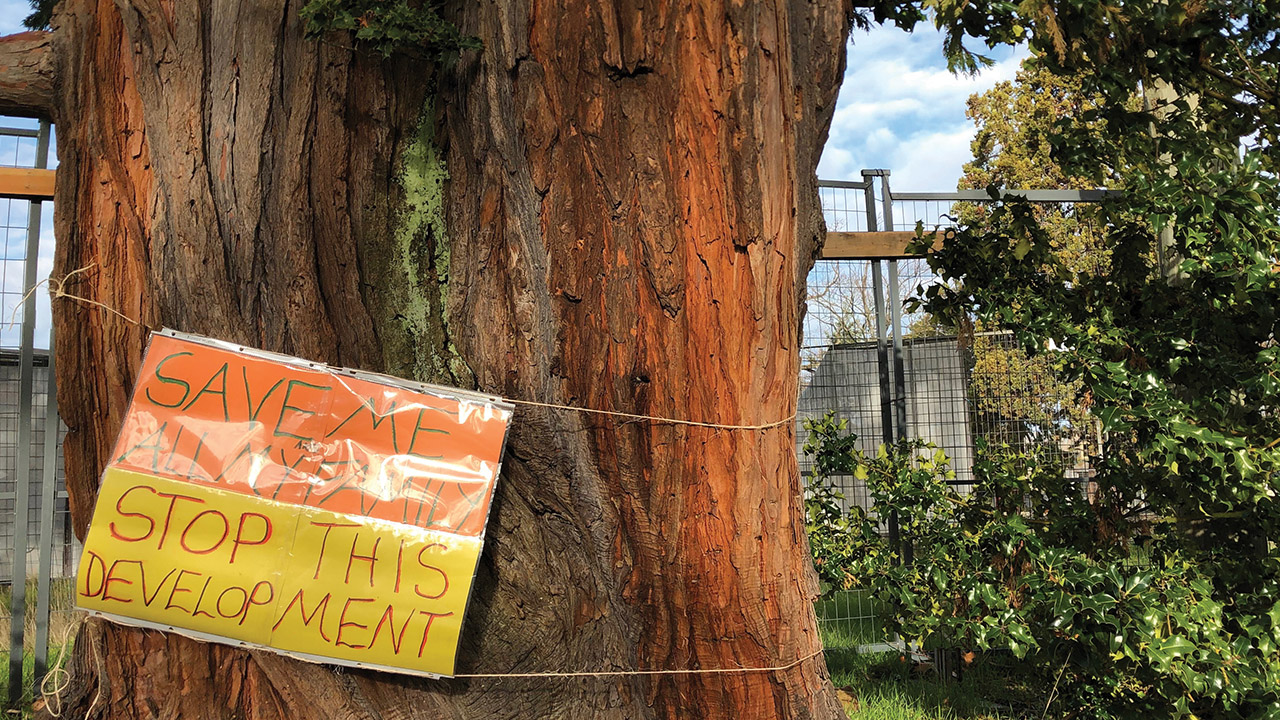Why We Love Trees
Trees offer a multitude of benefits that many of us take for granted. Scientists are discovering that trees are a far more sophisticated and valuable living resource than we ever imagined.
Here are just a few of the many benefits trees offer:
- Studies show that residents living on streets with mature trees have reduced levels of asthma.
- Trees have significant economic value and increase real-estate values by 3-15%.
- Neighbourhoods with mature trees are generally the highest priced neighbourhoods.
- Trees filter pollutants and absorb storm water runoff, reducing the cost of storm water management in communities.
- Treed commercial areas encourage customers to linger and shop at local businesses.
- A recent study tells us that planting trees, reducing deforestation and keeping the trees we have, are our best tools to mitigate climate change.
- Well-placed trees help people save money on home energy bills. Planted to the south and west of a house, they can provide cooling shade in summer. Planted to the north (or in the direction that winter winds come from) they reduce wind chill and heating costs up to 30 percent.
- Tree roots bind the soil, and fight erosion by shielding it from the drying effects of wind and sun
- In addition to providing cooling shade (reducing temperatures up to 10 degrees), trees are constantly transpiring a fine mist of water pulled up by the roots that cools and freshens the air. A mature oak can transpire as much as 100 gallons of water a day.

- Trees are the planet’s lungs and good for our lungs. Trees breathe out oxygen, we breathe in purified air.
- Trees clean and purify air and create fertile soil.
- Trees provide habitat for wildlife, endangered species, insects, other plant life and people.
- Trees increase neighbourhood pride, provide a sense of place and have historical significance.
- Tree shade is better ecologically than shade from a building because leaves filter rather than block light, allowing understorey plants to grow.

- Trees maximize watershed health, biodiversity, and conservation of sensitive ecosystems.
- Trees offer privacy from neighbours and buildings.
- Cutting mature and old growth trees severely disrupts nature’s balance by destroying long-established, nutrient-rich ecosystems that support food systems and habitats. Nature depends on the balance that forests provide.
- Fungi that inhabit the soil around trees are said to interconnect forests as part of an organic communications network.
- Trees provide food and habitat to thousands of species, including birds. Oak trees support more species of moths and butterflies than any other tree, thus providing food for all types of birds.
- Trees stimulate our senses by offering beauty to our eyes and music to our ears with the sights and sounds of birds, beautiful designs, foliage, etc.
- Trees make wonderful living memorials to honour loved ones.
- Trees offer protection from heat, wind, rain and noisy traffic or neighbours.
- Trees filter pollutants and absorb storm water runoff, reducing the cost of storm water management in communities.
- Trees make communities safer and contribute to fewer traffic accidents by providing a calming effect that results in less crime and reduced traffic speeds.
- By shading asphalt and other dark surfaces, trees cool the urban area allowing the asphalt to last 10 to 25 years longer.
- Trees are the hardest working, non-paid labourer on the planet, working 24/7, 365 days a year creating all the benefits listed above and more!
- Trees give us food, fruit, medicine, shelter, shade, beauty and serenity.
- Trees are great for relaxing under and peaceful to be around.
- Trees are perfect for hugging when you don’t have a friend nearby.
Size Matters!
A Few Facts About Mature Trees
There is no substitute for mature trees. It can take 300 or more saplings to equal the climate benefits of one mature tree. Maximum benefits to natural ecosystems come from larger, older trees with sizeable root and canopy masses.
Mature trees are the most resilient. They have withstood the test of time, weather, and humans. Mature trees should be championed and protected. Even with some damage, many mature trees remain healthy.
Healthy mature trees can often survive extreme storms and do not have to be removed if their damaged limbs are properly pruned and given time to recover. Some tree species can live hundreds of years.
Mature trees increase property values. Often the most coveted neighbourhoods are those with the most mature trees.
When mature trees fail, it is often due to improper planting and pruning, according to arborist and municipal urban forester, Ryan Senechal, who advocates for protecting and preserving mature trees.
“The single greatest impact to the urban forest comes from the incremental loss of green space associated with development and densification. In addition to removal of large mature trees, there is a loss of soils and space that could be used for future generations of trees.”
– City of Victoria Urban Forest Master Plan (2013)

It’s a myth that mature trees should be feared.
According to Christopher Roddick, author of The Tree Care Primer and head arborist at the Brooklyn Botanic Garden, “planting new trees is a fantastic ambition; the old saying goes that the best time to plant a tree was 20 years ago, and the second best time is today.
“But it can take 25 to 30 years before a new tree is large enough to start giving a return on ecosystem service investments: the environmental costs associated with growing and planting a tree are far greater than those the tree provides until the tree has reached a certain age, size, and output level.”
Roddick adds that the survival rate for saplings may be only 7 to 13 years on average. For suburban trees, it’s 30 years.
Tree planting initiatives themselves can sometimes be part of the problem, he adds. It can be easier for city officials and/or developers to cut down older trees if they are permitted to “replace” them with saplings. “Unfortunately, given survival rates and the pace of land development, many of those new trees may never reach the point of providing a net ecological benefit, much less equalling the benefits of a mature tree.”
Roddick notes that fear is the main reason why people call an arborist — fear of either a large branch or a whole tree falling on their homes.
In fact, odds are much greater that a person will die falling out of bed (about 500 a year in the U.S.) than being killed by a falling tree (fewer than 50). “One of the down sides of having a large brain is also having a vast imagination,” Roddick says. There are many better reasons to hire an arborist, to help maintain a tree in good health.
More from the Toolkit
Tree Planting, Care, & Preservation
A recent study stated that planting trees (and preventing deforestation) is by far the best way to help mitigate climate change. Both new and mature trees require some care and attention. Learn what is required for trees to survive and thrive at all stages of their lives.
Standing Up For Trees
Want to know what you can do to protect and preserve trees? Here are some straightforward ways and resources to make a difference in your neighbourhood, including sample letters to write, how to approach local media and municipal authorities, resources, neighbourhood associations and groups, and handy email addresses for sending letters.

